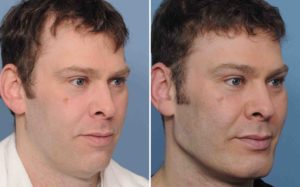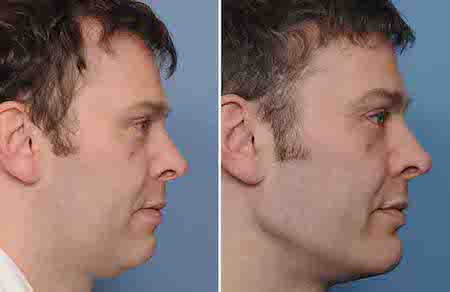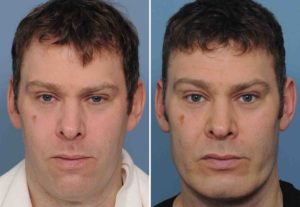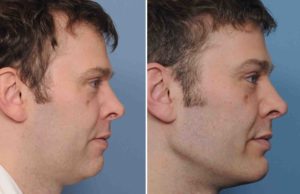A custom jawline implant is the most powerful changer of the lower third of the face from an augmentation standpoint. By expanding the entire inferolateral contour of the mandible, it provides a three-dimensional change. But with this change comes the necessity of a postoperative recovery period which involves swelling and a period of time before the final result is seen.
While every patient understands there will be recovery, and no one expects that results are instant, what is involved in that recovery and its duration are impossible to grasp beforehand. And because it is on one’s face and with the uncertainty of what the final outcome will be, the recovery process can be very unsettling for many.
Because of the usual privacy that many facial augmentation patients request, it can be very hard to understand what outcomes are actually achieved and what it looked like during the recovery process. These opportunities are rare when a patient is willing to publicly share the full photographic details of their surgery experience. But when they do there is a lot of valuable information to be learned from it.


While most custom jawline implant patients do not get an initial implant design of these dimensions and their full recovery make not take quite as long, the relevant point is that the full recovery process takes a lot longer than what one would think. And when you have to look at your face every day this recovery process can seem like an eternity. As a result an important component of a patient’s candidacy for this type of facial augmentation surgery is whether they have the ability to go through the needed recovery process. That is an impossible judgement for me to make on most patients, all I can do is provide insight into the after surgery recovery process. And patient’s who are willing to share their surgical experience in photographic detail provide the best education.
Dr. Barry Eppley
Indianapolis, Indiana





